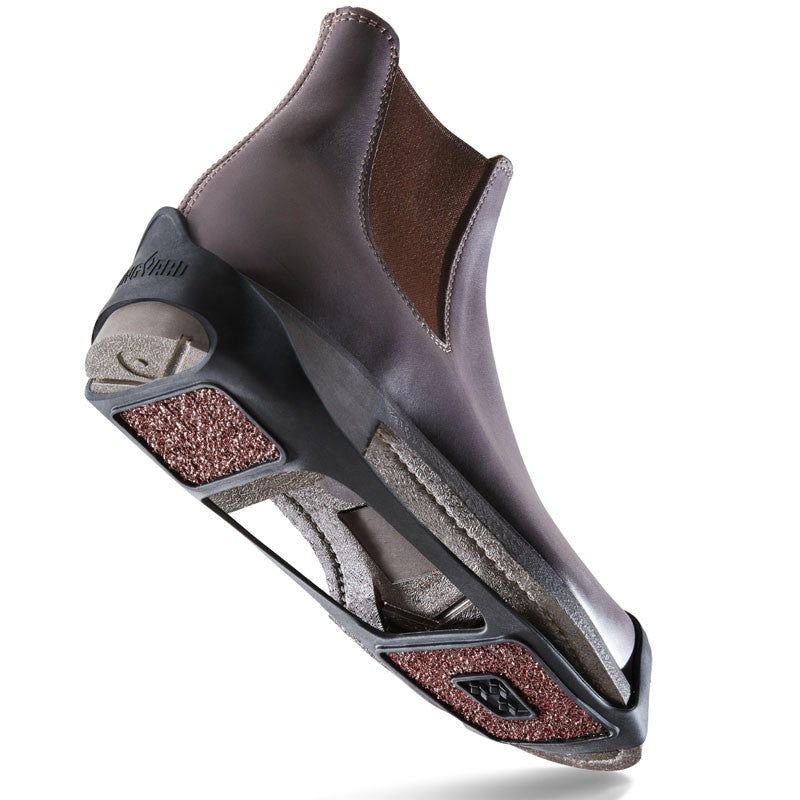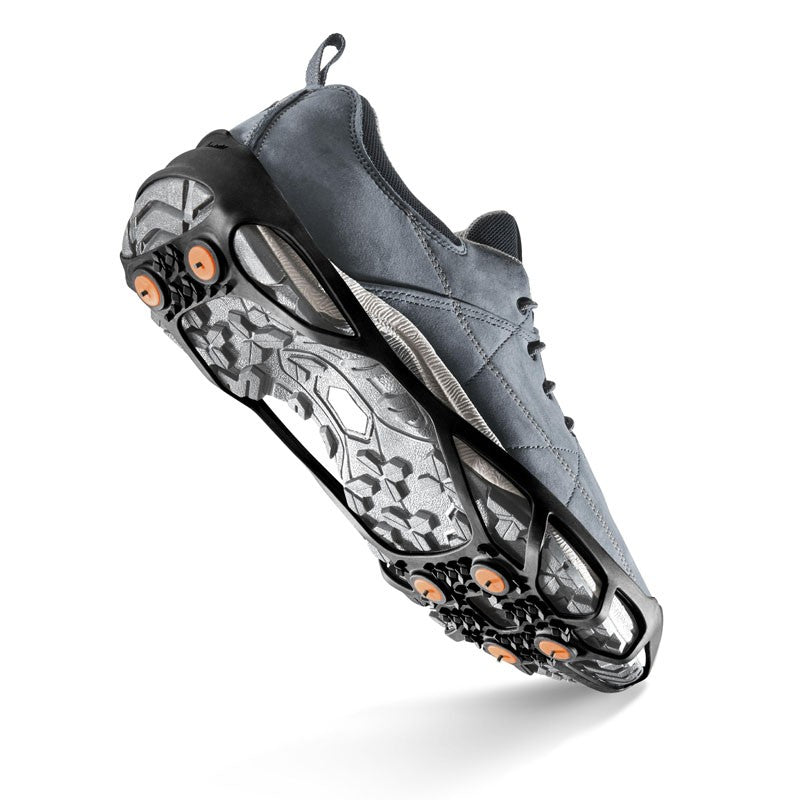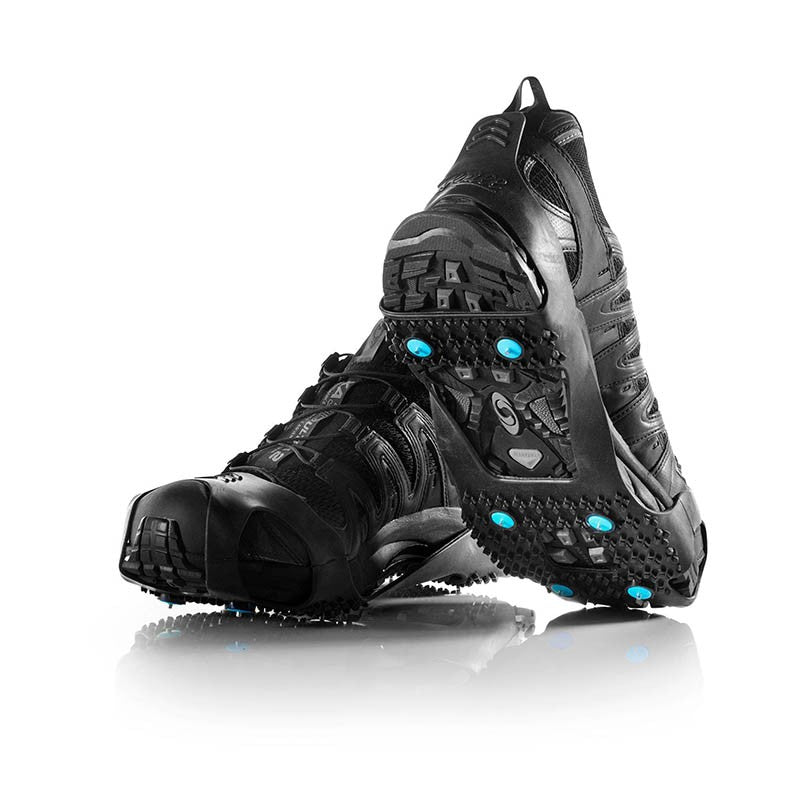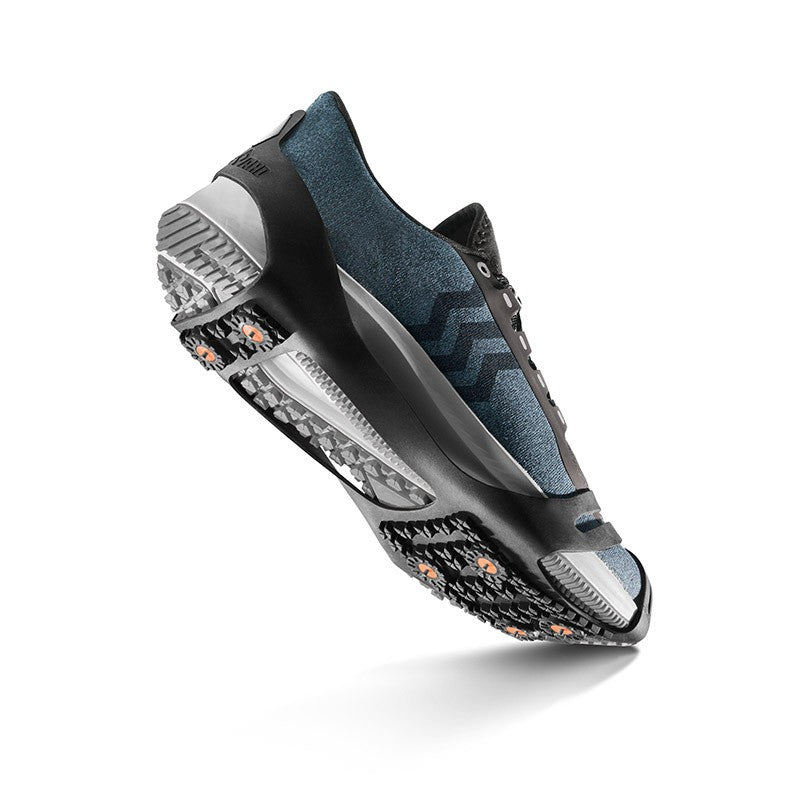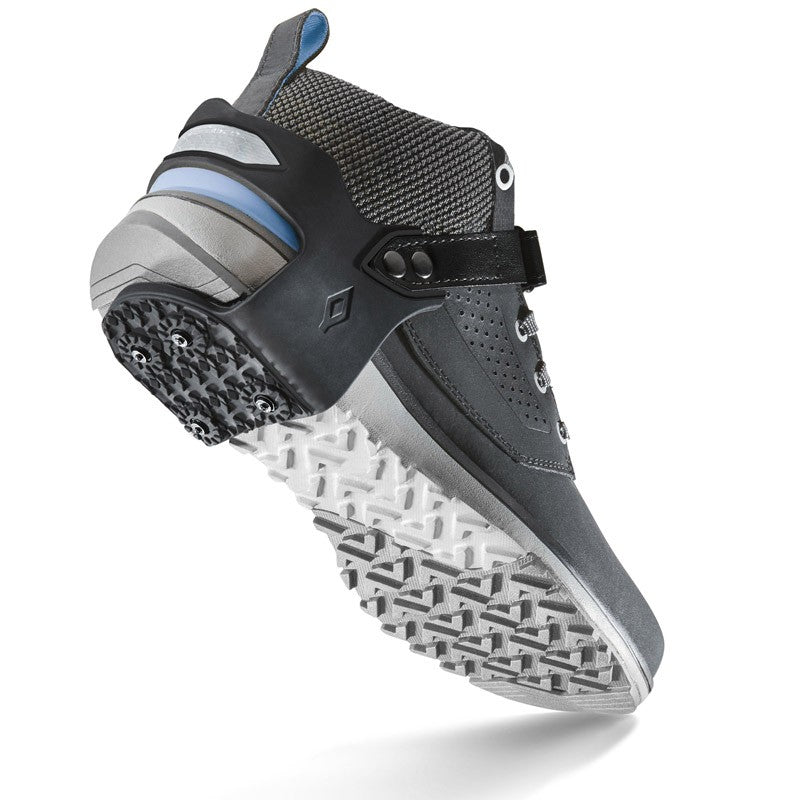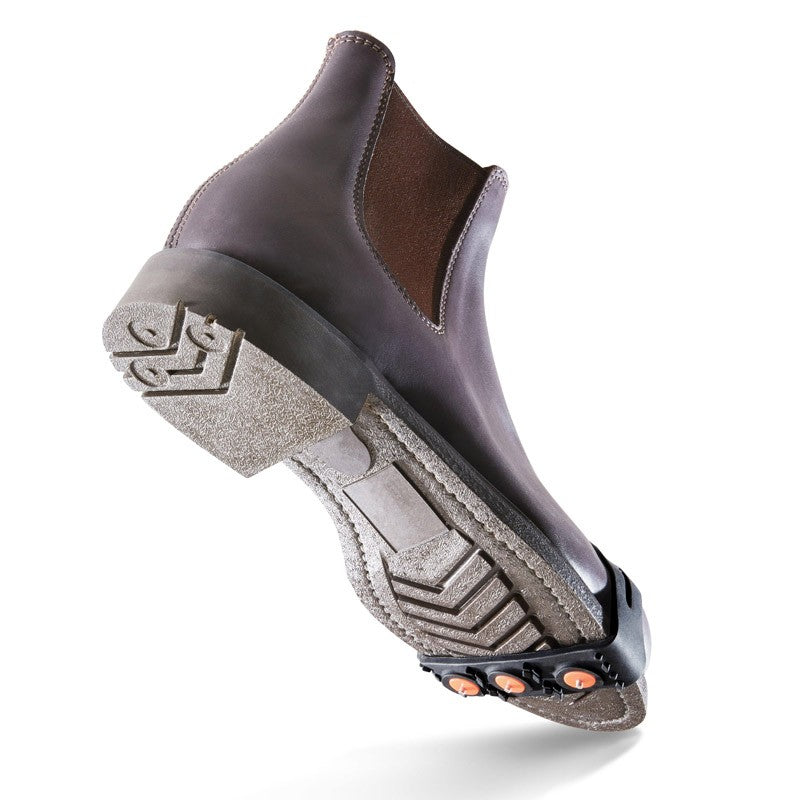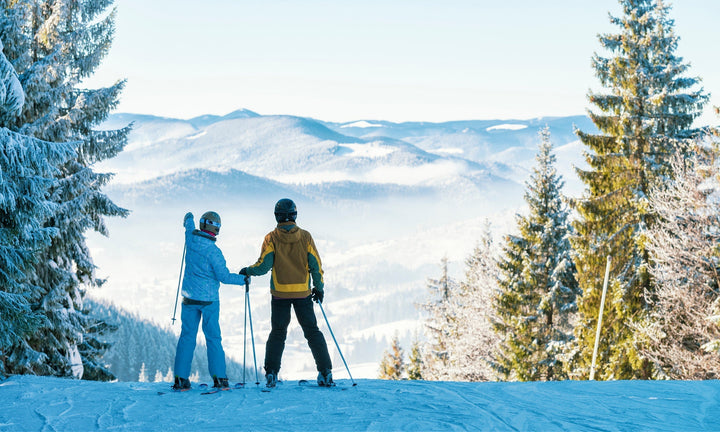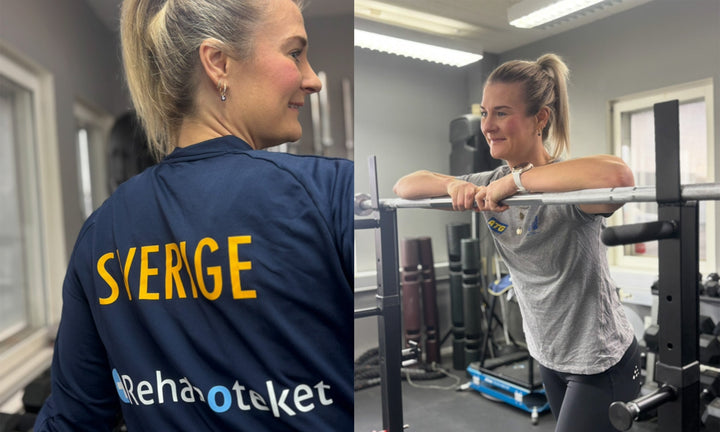
Winter brings an increased risk of slip-and-fall accidents. Snow and ice make the surface unsafe, and especially the elderly, people with balance problems or those who spend a lot of time outdoors are at greater risk of fall injuries. An easy way to reduce the risk is to use spikes or anti-slip shoes. But there are different models depending on the surface, activity and individual needs. Here we guide you to the right choice for the winter season.
What are spikes and anti-slip?
Spikes are anti-slip devices that are attached to shoes to provide better grip on icy and slippery surfaces. They are often equipped with metal spikes or studs that create friction against the snow or ice. Anti-slip devices can also be designed with other friction surfaces to suit urban environments or where you frequently enter and exit buildings.
In short: spikes reduce the risk of slipping and are an important aid for a safe winter walk.
Which spikes or anti-slip pads are right for you?
Adapt to the substrate
- Snow and ice: choose spikes with metal spikes or studs for maximum grip.
- Mixed environments (outdoors/indoors): choose anti-slip shoes with friction surfaces instead of studs, as spikes can become slippery on hard floors.
Take individual circumstances into account
- Do you have reduced mobility or grip strength? It can be difficult to put on more advanced spikes. Choose simpler models that attach around the heel or forefoot.
- Want to avoid having to take them off and on frequently? Opt for anti-slip pads that work on multiple surfaces.
Customise by activity
- Every day walks: light and flexible anti-slip shoes are often enough.
- Training and outdoor activities: choose stronger spikes with more aggressive studs for better grip on bare ice.
How to use stitches correctly
- Put them on before you go out – easier to do sitting at home than standing on an icy sidewalk.
- Only use them when it is slippery – on dry indoor floors, the studs can become slippery and also damage the surface.
- Store correctly – keep the spikes dry and cool when not in use.
- Replace worn studs – check rubber and studs regularly and replace them if worn.
Extra safety for those with balance problems
For people with severely impaired balance, crutches may need to be supplemented with a walking aid. If you use a cane, crutches or walking poles – make sure they are equipped with ice caps or studs to provide extra grip on winter roads.
Summary: Choose the right anti-slip shoe sole
Choosing the right type of anti-slip shoe makes a big difference in both safety and security. Whether you choose simple studs for everyday walks or aggressive studs for icy workouts, you can move more safely this winter.
At Rehaboteket, you will find a wide range of spikes and anti-slip shoes - from flexible everyday models to robust options for tougher winter conditions.
About the content – expertly reviewed by a physiotherapist
Our goal is to provide clear, practical and reliable information about health, exercise and orthopedic aids. All our blog posts are based on proven knowledge and are reviewed by our licensed physiotherapist, Ida, to ensure that the advice is safe, up-to-date and relevant.
You might also like to read
- Osteoarthritis problems during the colder months of the year
- Knee protection & knee stability for skiing – exercises, tips and support on the slopes
- Thumb osteoarthritis – when the base joint of the thumb hurts
Related injuries
Find the right support for your needs
Need help choosing the right product? Use our filters to sort by injury, body part or sport – or chat with our AI assistant Eir who can help you 24/7. You can also get personal advice from our licensed physiotherapist, Ida, via email or phone if you want expert support in your choice.


